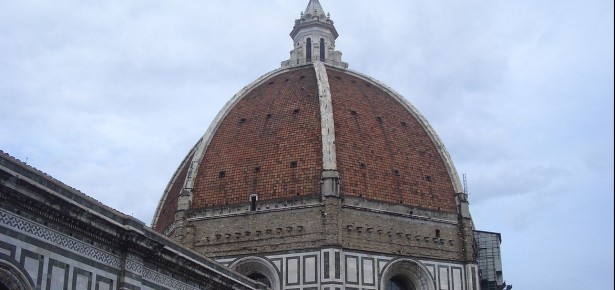
The second home for many historians in Florence is the state archive. Originally housed between the Arno and the Uffizi, the state archive was moved to a modern building just outside the oldest part of the city in the late 1980s. Previous generations of scholars describe the quiet of the old archive, as well as its lack of heat in the winter. I have always visited the newer building, a modern-looking structure beginning to show its age, but one, nevertheless, with generally consistent temperature control. After placing my laptop bag in one of the few lockers that isn’t broken, I pick up the pile of letters I was reading the day before. Each letter is nearly 600 years old – today’s task is again to look for learned references or the use of Latin between fifteenth-century Florentines far removed from the standard learned men studied by modern scholars. The stakes are high: I am trying to show the permeation of seemingly esoteric humanist learning among the Florentine population, and thus better explain the ubiquity of classical references in cultural relics from the period. I am, in short, trying to argue for a popular Renaissance.
The letter before me was stamped shut with a wax seal that crumbles onto the table and my clothes as I turn it over. I brush off the centuries old wax. The work is slow, the pieces of evidence small and scattered, the letters never on topics that I want them to discuss. Here is a man who does not read Latin – he signs his Italian letters and states they are written in his own hand, but his Latin letters are written by somebody else. The same man signs his letters to a learned friend “amico,” despite their diametrically opposed political alliances in the dangerous fifteenth-century city. Another letter refers to a conversation between him and Leonardo Bruni, the most learned man in the city. The man, Piero Guicciardini, ensures that his sons are educated along humanist lines. The evidence begins to suggest a person who dabbled in the liberal arts, but one who was far too busy to study full time or to write anything of interest for modern historians of ideas. Piero will be one of hundreds of similar men whose learned interests are pieced together, paper after paper, day after day, month after month for my project.
I work without pause until the midafternoon, and then walk through the crowded streets to the Palazzo Strozzi, home to one of the city’s best libraries for the study of Renaissance history. My favorite route passes the fifteenth-century haunts and remnants of political associates – friends, enemies, and indifferent – of the Medici family. Along the Borgo degli Albizzi are the palaces of Rinaldo degli Albizzi, exiled in 1434. The Via del Proconolo houses the fifteenth-century Pazzi palace, which was looted following the failed Pazzi Conspiracy in 1478. Through the city center, past the Piazza della Repubblica I walk towards the ancestral homes of the Strozzi families. Here is the Palazzo Davanzati, modestly famous for well-preserved fourteenth-century wall decorations. I know it as the home of Giuliano Davanzati’s descendants, a modestly learned man who was friends with another learned man, Matteo Strozzi, who also lived in this general area. The huge Palazzo Strozzi, built by Matteo’s son upon his return from exile, dominates the neighborhood. It is into that palace I go, past the museums and shops to the Renaissance institute tucked into the third floor. For hours that seem like minutes I will go through the library’s holdings, until evening, when the library doors shut and the anticipation begins to build for tomorrow’s hunt through the treasures of the Florentine archives and libraries.
Latest Comments
Have your say!